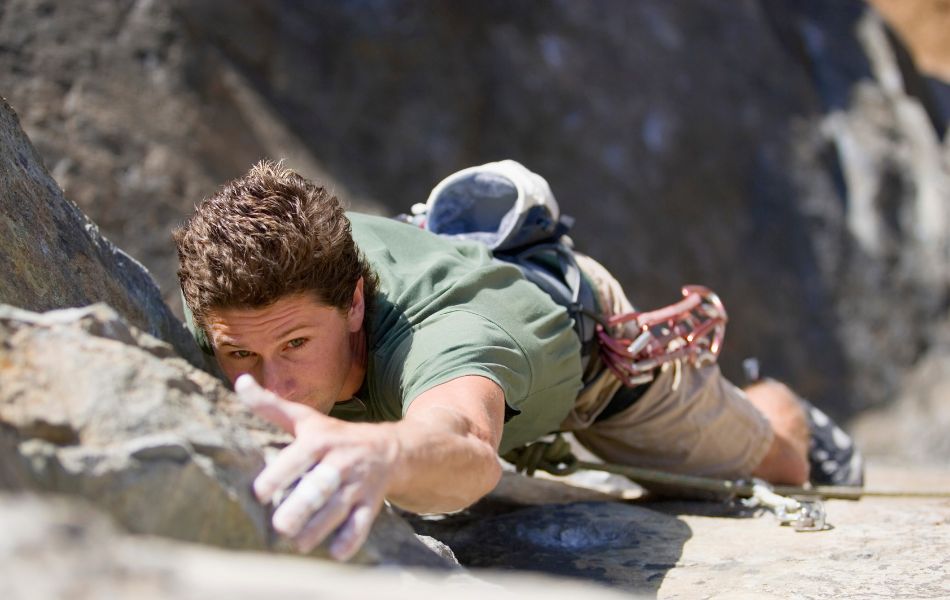Do Grip Strengtheners Work for Climbing?
When it comes to climbing, the strength of your grip can make the difference between conquering a route or taking a tumble. So, the question on many climbers’ minds is: can grip strengtheners give you an edge on the wall?
The simple answer is yes, but with a caveat. Grip strengtheners can indeed provide benefits as a supplementary training tool, yet they’re not a magic bullet. Climbing isn’t just about having an iron grip; it’s about the right kind of strength and technique.
Climbers need a symphony of upper body strength, endurance, and a nuanced grip that can adjust to the varied demands of rock faces and boulders. Grip strengtheners target the muscles in the fingers, wrists, and forearms, which are undoubtedly essential for climbers. However, they may not replicate the complexity of movements and stresses that actual climbing demands.
To ascertain the genuine impact of grip strengtheners on climbing, it’s important to consider the different types available – hand-held grip strengtheners and finger trainers. Hand-held devices, which are generally spring-loaded, aim to boost overall grip strength by targeting the flexor muscles in the fingers, wrists, and forearms. Finger trainers, by contrast, specifically strengthen finger flexors and extensors, more closely replicating the finger movements and muscle engagement encountered in climbing.
Those in favor argue that consistent use of grip strengtheners can enhance finger and forearm strength, stabilize finger joints, and boost endurance, leading to a more secure grip on climbs. Such training aids are believed to facilitate better crimping technique, amplify finger lock-off strength, and help climbers maintain smaller holds for longer.
Conversely, some argue that grip strengtheners may not be the most effective tools for climbing. They point out the dynamic nature of climbing, which involves movements like dynamic finger flexion and extension that static devices like grip strengtheners cannot adequately replicate. Many believe similar or greater strength gains can be achieved through climbing-specific exercises such as hang board workouts, dead hangs, and campus training.
Let’s dive into the debate, consult the climbing community, examine scientific research, and ultimately determine the role grip strengtheners play in a climber’s training regimen.
The Climber’s Perspective
We sought the opinions of rock climbers in the Glasgow area to gauge their views on the matter, and the feedback was mixed. Rock climber Paul Galbraith noted that since grip strengtheners require motion, they don’t accurately mimic the static grip needed for climbing. He suggests using a technique known as ‘The Block’ – holding a heavy object in a downward pincer grip until exhaustion – as a more climbing-relevant exercise.
Pro climber Ross Crooks also voiced his preference for actual climbing over grip strengtheners, noting that the act of supporting one’s body weight on the wall strengthens ligaments in a way grip strengtheners cannot. This sentiment aligns with the key criticisms of grip trainers: they don’t replicate climbing movements, and climbing itself is the best training.
However, Pro Rock climber Kyle Roberson offered a different perspective, suggesting that grip strengtheners could be beneficial, particularly for beginners or those looking to build foundational strength. He emphasized that strength is just one aspect of climbing, with mental stamina and intuitive proprioception also being crucial.
Anecdotal evidence from members of the Glasgow Climbing Club, including an older climber who maintained finger strength with grip strengtheners during lockdown, suggests that they can indeed be useful, especially when climbing facilities are inaccessible.
Empirical Insights: The Health University Study
To address this debate empirically, Health University conducted a comprehensive study involving a randomized controlled trial. Participants were split into two groups: one trained with grip strengtheners for 12 weeks, while the other followed a climbing-specific training regimen. The study monitored maximum grip strength, forearm muscle endurance, finger push/pull force, and overall climbing performance.
The study’s findings were intriguing. Both groups showed significant improvements, indicating that grip strengtheners do positively impact climbing performance. The grip strengthener group saw an average increase in maximum grip strength of 17.5%, while the climbing-specific group improved by 11.2%. However, the latter group showed more substantial gains in forearm endurance, finger force, and climbing technique.
Dr. Sarah Johnson, the lead researcher, concluded that grip strengtheners could be a valuable addition to a climber’s training arsenal, particularly for boosting maximum grip strength. However, climbers should not rely on them exclusively, as climbing-specific training is crucial for developing overall technique and endurance.
Making an Informed Decision
Whether grip strengtheners are effective for climbing is not a black-and-white issue. If you have a grip strengthener, there’s no harm in using it, particularly on your weaker hand, to gauge its effectiveness. However, climbers unanimously agree that the best training for climbing is climbing itself.
For those looking to retain their strength during the off-season, indoor climbing walls are a preferable alternative to grip strengtheners alone.
Ultimately, the debate over grip strengtheners for climbing is somewhat subjective. While they may offer benefits, especially for those new to the sport or lacking in hand and forearm strength, they are not a panacea. Climbers suggest that the best way to maintain and improve strength is through climbing itself or by engaging in climbing-specific training during the off-season.
For advanced climbers, incorporating tools like fingerboards and campus rungs may be beneficial, but such equipment is not recommended for beginners. It is essential to have a well-rounded training regimen that includes climbing-specific exercises to develop a comprehensive skill set for climbing.


